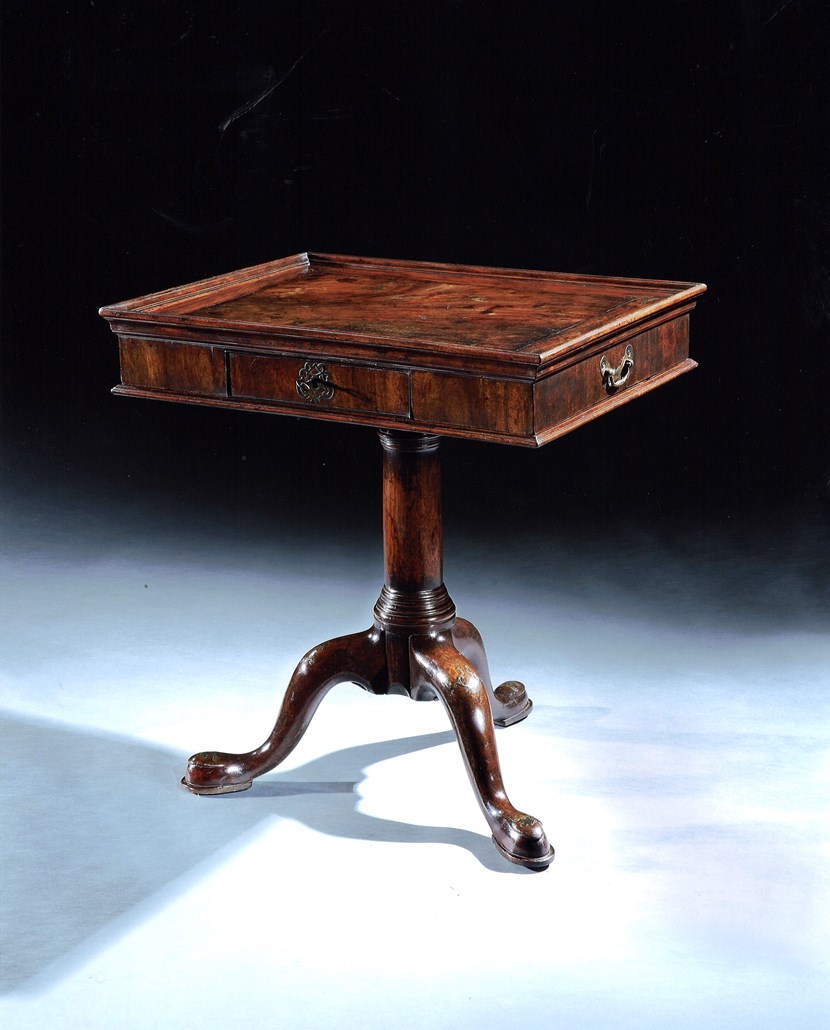
05 Apr 2017
Object of the week- Transforming table
It may appear to be just part of the furniture at Temple Newsam House, but this beautifully-made table actually hides an intricate internal mechanism which allows it to transform.
Made from mahogany with inlaid and finely engraved brass decoration, the desk was made in around 1740, possibly by Thomas Potter, a London-based master craftsman.
A complex system of internal springs and weights can be activated with the touch of a button, automatically transforming the desk from a flat tray-top table with a drawer to one suitable for reading or sketching.
The main body of the table also separates to reveal five hidden drawers, one of which contains an original glass inkwell.
Potter is recorded as a cabinet maker in High Holburn in 1737 and was working in partnership with John Kelsey in 1738. Together, they supplied furniture to Sir Richard Colt Hoare for Barn Elms House in 1738, indicating that they were able to attract wealthy clients.
Acquired by Temple Newsam, the desk is one of a number of pieces at the house which feature similar internal mechanisms.
Described as one of the truly great masterpieces of English furniture, Temple Newsam’s Channon cabinet also hides an incredible network of secret compartments.
Crafted by John Channon in 1750, the huge mahogany cabinet hides a number of intricate, interlocking drawers which were originally designed to conceal aristocrats’ love notes and treasures.
The reading and writing table was acquired with support from the Art Fund, Arts Council England/Victoria and Albert Museum purchase grant fund and Leeds Art Fund.
ENDS
For media enquiries contact:
Leeds City Council Communications team
communicationsteam@leeds.gov.uk